A Deep Dive into the Map of Cultures that Meditate
Meditation, with its multifaceted applications and varied techniques, has become a global phenomenon. The map of cultures that meditate is a testament to the ubiquity and importance of this ancient practice. But, like any practice with deep historical roots, it is crucial to understand its cultural diversity and origins. The world of meditation is vast, extending across various cultures, each contributing unique flavors to the collective pot of mindfulness. This article embarks on a journey, mapping the tapestry of cultural meditation practices, exploring the spiritual traditions intertwined with them, and understanding the intimate mind-body connection they foster.
Cultural Diversity in Meditation Practices
The world is a mosaic of cultures, each with its distinct values, traditions, and practices. This diversity is especially evident when examining meditation techniques from various cultures:
- Buddhist Meditation: Predominantly found in East Asia, this involves mindfulness and concentration, typically focusing on breathing or chanting.
- Yogic Meditation: Originating from India, it integrates postures and breathing techniques, emphasizing the union of mind and body.
- Sufi Whirling: Rooted in the mystical Islamic tradition of Sufism, practitioners whirl in dance meditations, seeking union with the divine.
- Native American Practices: These are rooted in the spirituality of nature and often involve dances, drums, and chants.
Each of these practices offers a unique perspective, yet they all strive for a deeper connection between the mind and body, and often, a greater connection to the world or a higher power.
Global Mindfulness and Its Impact
Meditation isn’t just an isolated spiritual act; it’s a movement that fosters global mindfulness. As people from different cultures share their meditation techniques, it leads to a fusion of practices and ideas. This blending is evident in the teachings of individuals like Brett Larkin, who incorporates various traditions in her meditation tutorials.
But why is global mindfulness essential? It’s because, in an increasingly connected world, understanding and embracing diverse meditation practices can lead to mutual respect, deeper empathy, and enhanced global cooperation.
“When you discover the meditation practices of another culture, you’re not just learning a technique; you’re tapping into their history, their struggles, and their spiritual journey.” – Anonymous Meditation Guru
Meditation and the Spiritual Traditions
Spirituality often provides the bedrock on which meditation practices are built. For instance, meditation in Buddhism is not just a technique but a path to enlightenment. Similarly, in yogic traditions, meditation isn’t merely about relaxation but about reaching a state of Samadhi, where the meditator merges with the universal consciousness. These spiritual traditions provide a context, making the meditation journey richer and more profound.
The mind-body connection plays a pivotal role in this journey. The foot, for instance, isn’t just a physical entity in some cultures. The left heel pain spiritual meaning in certain traditions signifies deeper emotional or spiritual distress. It exemplifies how intricately the mind and body are intertwined in various cultures and how meditation can address both physical and emotional pains.
Breathing and Meditation
At the heart of most meditation practices lies the art of breathing. It’s the bridge connecting the conscious with the subconscious, the tangible with the intangible. By focusing on our breath, we center ourselves, finding balance amidst chaos. It’s no wonder that in traditions spanning from yogic practices to Buddhist meditation, the breath often takes a central role.
Breathing exercises are also used therapeutically, aiding in various aspects of health care. Incorporating mindfulness in our everyday actions, like managing food cravings or facilitating mindful healing of the heart, can make a significant difference in our overall well-being. This integration of mindfulness into healthcare showcases meditation’s versatility, demonstrating its benefits beyond the spiritual realm and into the tangible world of health and wellness.
Conclusion
As we delve deeper into the realms of cultural meditation practices, it becomes evident that meditation is much more than a simple act of closing one’s eyes and focusing. It’s a rich tapestry of cultural insights, global mindfulness movements, spiritual traditions, and intricate mind-body connections. As we navigate this vast landscape, we’ll uncover how these practices contribute to holistic well-being and explore the benefits of incorporating them into our modern lives.
Excited to continue this enlightening journey? Join us in the next segment, where we will dive deeper into the cultural significance of meditation and its transformative powers on global communities.
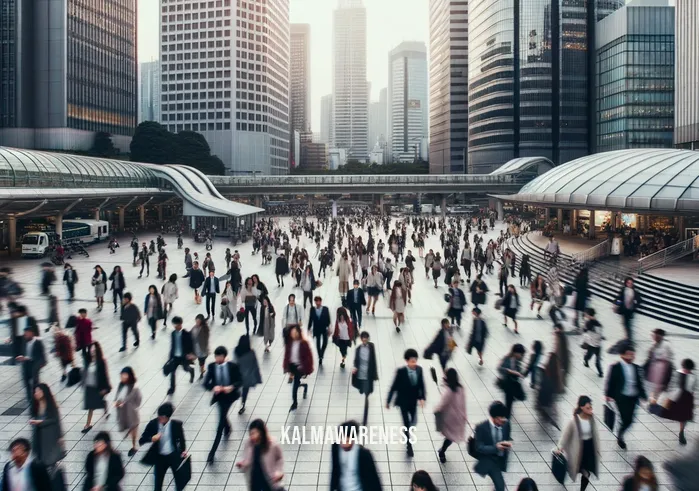
Navigating the Global Terrain: An Expanded Map of Cultures that Meditate
Meditation, though universal in its essence, wears different robes across the world. From the zen gardens of Japan to the sacred pyres of the Mayans, it has been interwoven uniquely into each culture’s fabric. This extensive map of cultures that practice meditation is not just a chart of methods; it’s a tale of history, adaptation, and unity in diversity. As we continue our exploration, let’s unfold more layers of this intricate map.
The Evolution of Meditation across Continents
Different continents have nurtured diverse meditation techniques. While these techniques may vary in practice, their core purpose—to connect the mind, body, and soul—remains constant:
- Africa: Indigenous tribes have long used rhythmic dances and chants to enter trance states, connecting with ancestors and nature.
- Europe: Early Celtic and Druidic practices emphasized meditation in natural settings, seeking harmony with the Earth.
- Australia: The Aboriginal people, with their dreamtime stories, practice a form of meditation, connecting with their ancient tales and landscapes.
Languages of Silence: Variations in Techniques
Understanding the varied techniques across the globe accentuates the importance of a map of cultures that meditate. Here’s a glimpse of the diverse methods:
- Guided Meditation: Practitioners are led through a meditation by a guide or teacher, which can be live or recorded.
- Mantra Meditation: Repeating a word or phrase, like the famous ‘Om’, to dive into deeper consciousness.
- Walking Meditation: Being mindfully aware while walking, often practiced in monasteries or nature.
- Loving-kindness Meditation: Sending out love and good wishes to oneself and others.
Incorporating insights from the mindful health care approach, it becomes evident how these varied techniques can cater to different health and wellness needs, enabling practitioners to choose what aligns best with their journey.
A Tableau of Meditation: A Snapshot of Global Practices
| Country | Primary Technique | Spiritual Roots |
|---|---|---|
| India | Yogic Meditation | Hinduism & Buddhism |
| Japan | Zen Meditation | Zen Buddhism |
| Egypt | Ritualistic Meditations | Ancient Egyptian Gods |
| Brazil | Shamanic Meditation | Indigenous Spiritual Practices |
| USA | Mindfulness Meditation | Adapted from Eastern Traditions |
This tableau provides just a snapshot of the vast expanse of meditation practices. However, to truly traverse the map of cultures that meditate, one must delve deeper into each culture’s heart, uncovering stories, beliefs, and the unique ways they’ve harnessed the power of meditation.
Why this Map Matters
Having an extensive map of meditation cultures is more than an academic exercise; it serves several profound purposes:
- Interconnectedness: Realizing that various cultures, despite differences, have harnessed meditation’s power, showcases humanity’s shared essence.
- Personal Journey: For seekers, this map can guide them to a technique that resonates, enhancing their personal meditation journey.
- Preservation: Documenting these practices ensures that they’re passed down, preserving ancient wisdom for future generations.
Onward to Unchartered Territories
While we’ve expanded our horizons, the map of cultures that meditate is far from complete. Each culture, each community, and even individual practitioners have their nuances, stories, and practices, making the world of meditation an ever-evolving landscape.
Eager to venture further? In the next segment, we’ll dive into the fascinating tales of meditation’s unsung heroes and the hidden gems of traditions lesser-known. The world of meditation is vast, and our journey has just begun. Continue reading to uncover more treasures from this enlightening expedition.

Echoes of Wisdom: Inspirational Tidings from the Map of Cultures that Meditate
Throughout history, diverse cultures have harnessed the transformative power of meditation, not just as a spiritual endeavor but as a beacon of hope, resilience, and inspiration. This vast tapestry of global meditation practices resonates with stories of personal triumphs, enlightenment, and deep inner peace. The diverse landscapes portrayed in the map of cultures that meditate house a treasury of wisdom. Let’s delve into this reservoir of inspiration and listen to the echoes from the ages.
The Power of Shared Silence
A core thread that binds these diverse meditative practices is the cherished silence—a space where words fade, and only essence remains. This collective silence speaks volumes, testifying to the human spirit’s strength and the transformative journey through meditation.
“Silence isn’t empty; it’s full of answers.” – Anonymous
Such sentiments resonate universally, whether in the heart of an African jungle, the serene mountains of Tibet, or the bustling streets of New York. The language of silence is universally understood, and its profundity is an integral feature of the vast expanse of meditation cultures.
Glimmers of Hope in the Darkest Hours
Meditative practices have been a source of solace for many during tumultuous times, helping them navigate personal and societal challenges. In cultures worldwide, meditation stands as a beacon of hope, illuminating paths during the darkest hours.
“In the midst of chaos, there is also opportunity.” – Sun Tzu
This perspective is vividly depicted in mindful healing of the heart, where meditation assists in the holistic healing process, uniting mind, body, and spirit in harmony.
The Universal Quest for Enlightenment
Across the map of cultures that meditate, there’s a shared aspiration: the quest for enlightenment. While the paths may vary, the destination—a state of heightened awareness and profound peace—remains constant.
“The mind is everything. What you think, you become.” – Buddha
Such pearls of wisdom, distilled from centuries of meditative practices, guide countless individuals on their journeys, emphasizing that enlightenment isn’t a distant dream but a tangible reality accessible to all.
Embracing the Journey, Cherishing the Moments
While the ultimate goal might be enlightenment, the meditative journey itself offers countless moments of joy, introspection, and growth.
“It’s not the destination but the journey that enriches us.” – Unknown
Stories from Brett Larkin’s meditation experiences beautifully encapsulate this sentiment, highlighting the numerous epiphanies, big and small, that punctuate the meditation journey.
The Endless Horizon: Hope Beyond the Known
As we traverse the intricate pathways of the map of cultures that meditate, we realize that the horizons of meditation are endless. Every culture, every individual brings forth unique tales of hope, resilience, and transformation, enriching the collective consciousness.
“Hope is being able to see that there is light despite all of the darkness.” – Desmond Tutu
It’s this undying spirit of hope, echoing through ages and across continents, that makes the map of meditation cultures a treasure trove of inspiration.
Setting Our Sights Forward
Having journeyed through tales of hope and pearls of wisdom from diverse meditation cultures, our expedition is far from its conclusion. The world of meditation is as vast as the human spirit—limitless, boundless, and ever-evolving.
As we chart our path forward, the next segment promises to unravel the science behind the art, demystifying the intricacies of meditation’s impact on our psyche and well-being. Curious about the alchemy of meditation? Continue reading to delve into the harmonious blend of science and spirituality, awaiting in the next chapter.
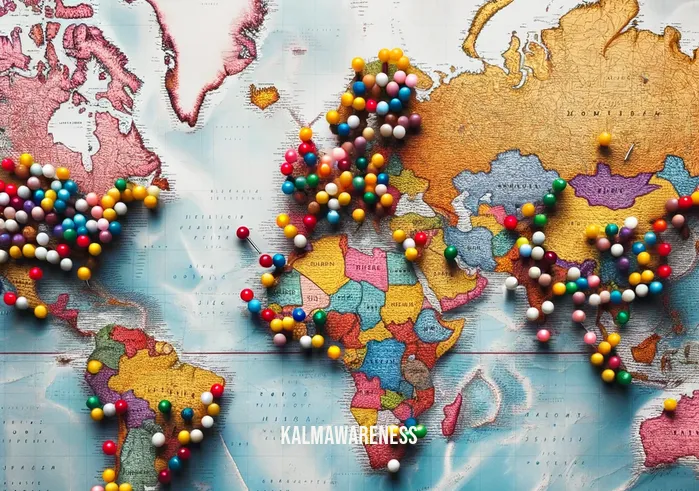
Decoding the Layers: The Nuances within the Map of Cultures that Meditate
A map is a visual representation, connecting dots and tracing pathways. The map of cultures that meditate is no different, but it also intricately weaves tales, traditions, and techniques into its fabric. As we delve deeper into this map, we encounter numerous layers, each bearing insights, wisdom, and a unique flavor of mindfulness. This chapter aims to unravel these layers, breaking down the various components that make the global meditation landscape so rich and diverse.
Geographical Spread: A Panorama of Meditation
Let’s first journey through the geographical expanse, tracing meditation’s footsteps across the globe:
- Asia:
- Birthplace of many renowned meditation forms such as Zen, Vipassana, and Yoga.
- Monastic traditions prevalent, with meditation integral to daily rituals.
- Africa:
- Ritualistic dances and trance states.
- Connection with nature and ancestors as a meditation form.
- Europe:
- Druidic and Celtic meditative practices, rooted in nature.
- Christian meditation emphasizing contemplative prayer.
- Americas:
- Native American meditation involving vision quests and drum circles.
- Modern cities seeing a surge in mindfulness and stress-relief meditation practices.
Techniques and Traditions: Diversity in Practice
Breaking down the various techniques, we find:
- Concentration Meditation: Focusing on a single point, such as the breath, a mantra, or even an external object.
- Reflective Meditation: Pondering upon a specific thought or theme, seeking insights and understanding.
- Heart-Centered Meditation: Focusing on the heart area, evoking feelings of love and compassion.
- Movement Meditation: Includes practices like Tai Chi, Qigong, and even mindful walking, integrating physical movement with mindfulness.
Such diversity in techniques is mirrored in mindful food cravings, showcasing meditation’s adaptability across varied contexts.
Historical Lineage: Meditation Through the Ages
Every meditation technique carries a legacy, a lineage passed down through generations:
- Vedic Meditation: Originating from the ancient scriptures of India.
- Transcendental Meditation: Rooted in the Vedic tradition but popularized in the modern age.
- Kinhin: The Zen practice of walking meditation.
- Mettabhavana: An ancient Buddhist meditation focusing on cultivating loving-kindness.
Modern-day Resonance: Meditation Meets the Contemporary World
In the modern hustle, the age-old meditation practices find a renewed resonance:
- The rise of meditation apps and digital platforms.
- Workplace mindfulness sessions to boost productivity and mental well-being.
- Incorporation in mindful health care to foster holistic healing.
Intersections and Confluences: When Traditions Meet
As cultures interact, their meditation practices often intersect and blend:
- Eastern meditation techniques, such as Yoga, gaining momentum in the West.
- Integration of mindfulness in Christian and Jewish practices.
- Modern reinterpretations of ancient techniques, as seen in Brett Larkin’s meditation journey.
Anticipating the Grand Finale
While we’ve dissected and decoded the various layers within the map of cultures that meditate, our exploration is not yet complete. The final chapter promises to weave these dissected threads into a coherent narrative, offering a panoramic view of global meditation practices.
Are you ready for the culmination of this enlightening voyage? The next chapter ties together our discoveries, celebrating the unity in diversity that the world of meditation exemplifies. Stay with us for the grand conclusion of this exploration.
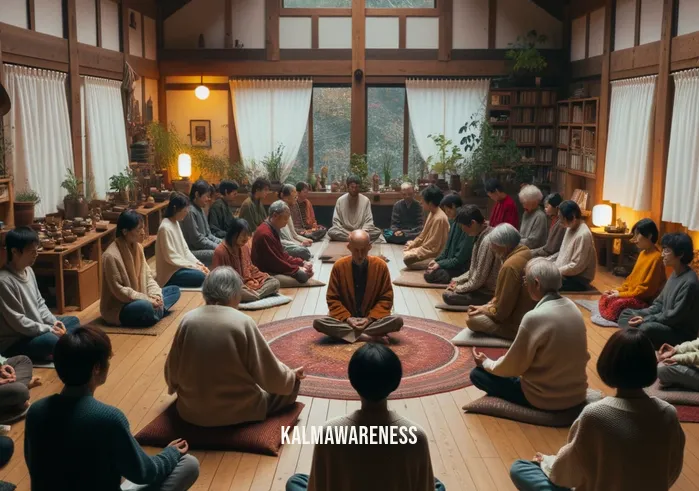
Reflections and Revelations: Charting the Map of Cultures that Meditate
Our expedition, charting the vast terrains of the map of cultures that meditate, has been an enlightening journey, a voyage across time, traditions, and terrains. As we gather our thoughts, pausing to reflect on the insights gleaned and the stories unveiled, a myriad of emotions and revelations come to the fore. Let’s take a moment to celebrate, reminisce, and set our sights forward.
A Tapestry of Traditions
What began as an exploration of meditative practices across cultures soon transformed into an immersion into humanity’s shared essence. From the tranquil monasteries of the East to the rhythmic dances of Africa, the shared thread of seeking inner peace, connection, and enlightenment came alive.
Unity in Diversity
While each culture brings its unique flavor to meditation, the underlying principles remain strikingly similar. It’s a testament to how, beneath the surface differences, our quests, aspirations, and innermost desires converge.
“The world is but a canvas to our imagination.” – Henry David Thoreau
This journey has indeed painted a vivid canvas, brimming with colors of hope, threads of wisdom, and strokes of inspiration from every corner of the globe.
The Ever-Evolving Landscape
The world of meditation, as our journey showcased, isn’t static. It’s dynamic, evolving, and adapting. The confluence of ancient traditions with contemporary needs, as seen in aspects like mindful health care, exemplifies this beautiful evolution.
Gratitude and Anticipation
As we wrap up, a sense of gratitude fills the heart—for the wisdom of the ages, for the cultures that have preserved these practices, and for you, dear reader, for embarking on this exploration with us.
“Gratitude makes sense of our past, brings peace for today, and creates a vision for tomorrow.” – Melody Beattie
While this chapter concludes our current exploration, the world of meditation, with its limitless horizons, beckons us for more adventures. We’re excited about the myriad journeys that lie ahead, and we hope you’ll join us in future editions.
Embarking on Your Personal Quest
With the insights and knowledge you’ve gained, we encourage you to delve deeper. Revisit previous sections if you wish, explore more content in our magazine, or better yet, embark on your meditation journey. The map is laid out; the treasures await your discovery.
Until Next Time…
Thank you for journeying with us, for being an integral part of this expedition. Here’s to many more explorations, revelations, and shared moments of enlightenment. Stay curious, stay inspired, and remember—the world of meditation is as vast as the universe, ever waiting to be explored. Until our paths cross again, happy meditating!


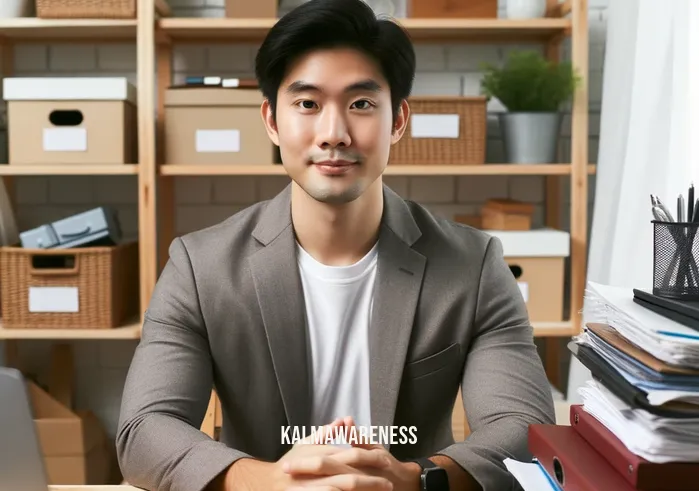
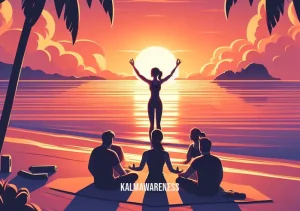
![guided practice activities 3a-2 _ Image: [Classroom atmosphere filled with smiles as students raise their completed work.]Image description: A triumphant atmosphere fills the classroom as students proudly raise their completed work. Smiles, high-fives, and a sense of accomplishment abound, showcasing the power of guided practice and collective effort.](https://kalmawareness.com/wp-content/uploads/2023/09/180_5-300x211.webp)
